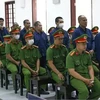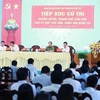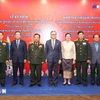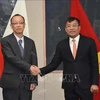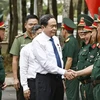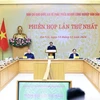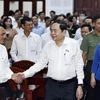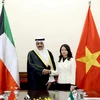Delegates to the eighth East Asia forum, held in Da Lat city of Lam Dong between August 26-27, shared opinions and discussed measures to boost cooperation, connectivity and build a community in the region.
The forum is the annual dialogue between 10 ASEAN members and China , Japan and the Republic of Korea (RoK).
In her opening speech, Minister of Labour, Invalids and Social Affairs Nguyen Thi Kim Ngan affirmed the vision of a peaceful, stable, prosperous and advanced East Asia community is becoming reality.
With its high growth rate, East Asia is considered one of the world’s most dynamic regions, Ngan said.
Since 1997, regional cooperation and linkage have achieved important results, with economic ties taking the lead, creating an important premise for the development of the community. Meanwhile, economic-trade cooperation between East Asian countries has become deeper, with a network of bilateral and multilateral free trade agreements, the minister said.
Minister Ngan also emphasised challenges the region is facing, including gaps in development, differences in culture and limitations in infrastructure.
She suggested the region strengthen connectivity between the economies in terms of both infrastructure and human resources as well as people-to-people exchanges.
Ngan also requested close coordination and cooperation between states and enterprises and the participation of people to increase regional development and connectivity.
Participants to the forum discussed cooperative measures to increase linkage, as well as the role of governments and enterprises in the development of infrastructure development projects.
Delegates from China , Japan and the RoK spoke highly of ASEAN’s completion of a master plan for connectivity to be submitted to the upcoming 17 th ASEAN Summit in Hanoi , saying that linkage among ASEAN member countries would be an important foundation for the bloc and development of connectivity with its partners.
They also pledged continued support for ASEAN to implement the master plan and join the bloc in studying ways to attract private investment in infrastructure development, capacity strengthening, human resource development and scientific-technological cooperation.
According to the delegates, East Asia is likely to become a region with thoroughly connected infrastructure where ASEAN is a centre of connectivity in the next 20 years./.
The forum is the annual dialogue between 10 ASEAN members and China , Japan and the Republic of Korea (RoK).
In her opening speech, Minister of Labour, Invalids and Social Affairs Nguyen Thi Kim Ngan affirmed the vision of a peaceful, stable, prosperous and advanced East Asia community is becoming reality.
With its high growth rate, East Asia is considered one of the world’s most dynamic regions, Ngan said.
Since 1997, regional cooperation and linkage have achieved important results, with economic ties taking the lead, creating an important premise for the development of the community. Meanwhile, economic-trade cooperation between East Asian countries has become deeper, with a network of bilateral and multilateral free trade agreements, the minister said.
Minister Ngan also emphasised challenges the region is facing, including gaps in development, differences in culture and limitations in infrastructure.
She suggested the region strengthen connectivity between the economies in terms of both infrastructure and human resources as well as people-to-people exchanges.
Ngan also requested close coordination and cooperation between states and enterprises and the participation of people to increase regional development and connectivity.
Participants to the forum discussed cooperative measures to increase linkage, as well as the role of governments and enterprises in the development of infrastructure development projects.
Delegates from China , Japan and the RoK spoke highly of ASEAN’s completion of a master plan for connectivity to be submitted to the upcoming 17 th ASEAN Summit in Hanoi , saying that linkage among ASEAN member countries would be an important foundation for the bloc and development of connectivity with its partners.
They also pledged continued support for ASEAN to implement the master plan and join the bloc in studying ways to attract private investment in infrastructure development, capacity strengthening, human resource development and scientific-technological cooperation.
According to the delegates, East Asia is likely to become a region with thoroughly connected infrastructure where ASEAN is a centre of connectivity in the next 20 years./.
